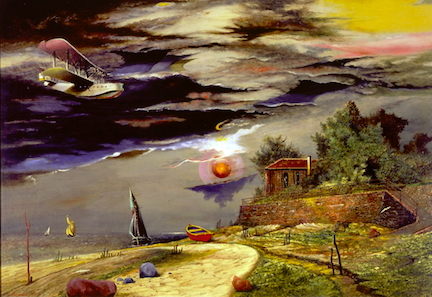A Critical Analysis of Magical Realism in “Forty Rules of Love” in the Light of Post-Modernist Theory
Keywords:
Fiction, magic realism , sufi, reality, imaginationAbstract
This research explores the intricate narrative techniques employed by Elif Shafak in "The Forty Rules of Love," where historical fiction converges with magical realism to create a captivating exploration of spirituality and love. The novel seamlessly intertwines the stories of Rumi and Shams in 13th-century Turkey with the modern-day journey of Ella, a woman who discovers profound connections to their lives through her reading of a manuscript. Shafak's adept use of mystical encounters, dreams, and Sufi concepts blurs the boundaries between reality and imagination, inviting readers into a world where the spiritual and the mundane coalesce. Through a rigorous content-based analysis, this study aims to delve deeper into the thematic richness and narrative impact of magical realism within Shafak's work. By examining specific instances of magical realism throughout the novel, such as Ella's mystical experiences and the fluidity of time and space, this research seeks to elucidate how these elements contribute to the overarching exploration of spiritual themes. Additionally, the study will investigate how Shafak's use of magical realism enhances reader engagement and prompts critical reflection on the nature of reality and the power of love. By shedding light on the intricate interplay between historical fiction and magical realism in "The Forty Rules of Love," this research contributes to a deeper understanding of Shafak's literary craftsmanship and the thematic complexities of her work. Through an analysis of both textual evidence and reader responses, this study aims to provide valuable insights into the ways in which magical realism enriches the narrative experience and fosters meaningful contemplation of spiritual and existential questions.
Downloads
References
Borges, J. L. (1998). Jorge Luis Borges: Conversations. Univ. Press of Mississippi.
Morrison, T. (2004). Beloved. 1987. New York: Vintage.
Esquivel, L. (1993). Like water for chocolate. Random House.
Shafak, E. (2010). The Forty Rules of Love
Zamora, L. P., & Faris, W. B. (Eds.). (1995). Magical realism: Theory, history, community. Duke University Press.
Marquez, G. G. (2004). One Hundred Years of Solitude. 0CRC Press, 255.
Hart, S. M. (2003). Magical realism in the Americas: politicised ghosts in One Hundred Years of Solitude, The House of the Spirits, and Beloved. Journal of Iberian and Latin American Studies, 9(2), 115-123.
Allende, I., & Rodden, J. (2004). Conversations with Isabel Allende: Revised Edition. University of Texas Press.
Yip, A. K. T., & Toft, A. (2021). Bisexuality, Religion and Spirituality. Routledge.
Spivak, G. C. (1990). Reading The Satanic Verses. Third Text, 4(11), 41-60.
Umashankar, R. R. (2012). Defending Sufism, Defining Islam: Asserting Islamic Identity in India.

Published
Data Availability Statement
Open Access
Issue
Section
License
Copyright (c) 2023 Scholar Insight Journal

This work is licensed under a Creative Commons Attribution-NonCommercial-NoDerivatives 4.0 International License.
Authors retain the copyright of their work. All articles in Scholar Insight Journal are published under the terms of the Creative Commons Attribution 4.0 International License (CC BY 4.0).
This license permits anyone to read, download, copy, distribute, print, search, or link to the full texts of the articles, and to use them for any other lawful purpose, without asking prior permission from the author(s) or the publisher, provided proper attribution is given to the original work.




